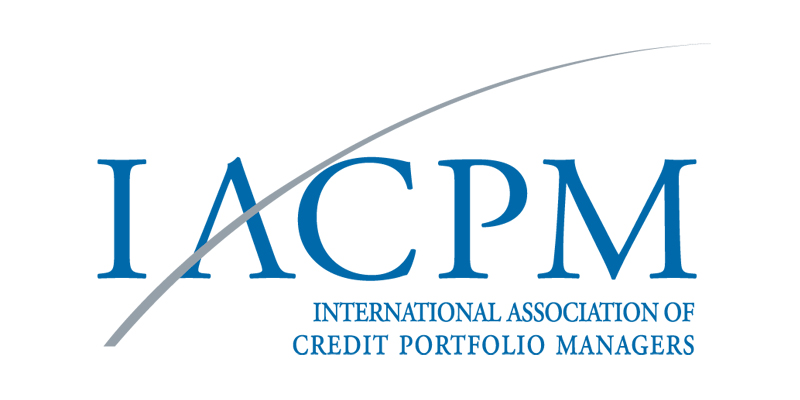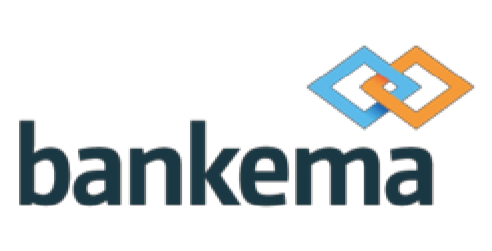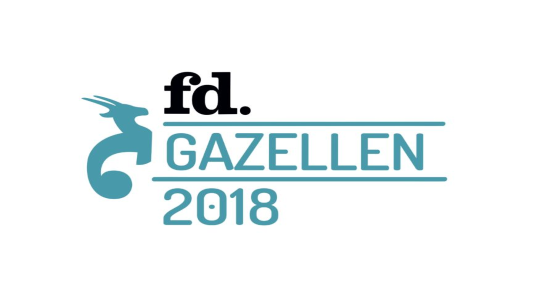Latest OSIS related news

SNS Investor Appeal Valuations Provided by OSIS
In 2013 the Dutch State acquired SNS Bank as a result of bankruptcy and decreed certain creditors be expropriated. In response to this decree, several investors appealed to the highest Dutch court in Amsterdam. The court requested 3 experts provide their opinion concerning the valuation of SNS bank as of 31 January 2013. OSIS was called upon to calculate the valuation of the residential mortgage portfolio and submit a report which has recently been published by the court in Amsterdam.
The valuation was based on individual information concerning the 539,805 loan parts held by 279,641 borrowers. The valuations were done on a loan by loan basis in value of the macroeconomic situation in January 2013 and by stressing the portfolio in function of the scenarios valid at the time of the bankruptcy. This detailed analysis and report produced by OSIS can be found here.
The outcome of the lawsuit is still pending.

EBA Basel Assessment Sees Impact Driven by Large Banks
The European Banking Authority (EBA) presented the results of its Basel III implementation assessment in a public hearing on 2 July. This includes a quantitative impact study (QIS) based on data from 189 EU banks, and a comprehensive set of policy recommendations in the area of credit and operational risk, output floor and securities financing transactions. This work, which responds to a Commission's call for advice, shows that the full implementation of Basel III in the EU, under the most conservative assumptions, increases the weighted average minimum capital requirement (MRC) by 24.4%, leading to an aggregate capital shortfall of EUR 135.1 bn for large global banks. The impact on medium-sized banks is limited to 11.3% in terms of MRC, leading to a shortfall of EUR 0.9 bn, and on small banks to 5.5% MRC with a EUR 0.1 bn shortfall. The EBA will publish the full report by the end of July (for the full article, we refer you to the following link).
The capital shortfall can be addressed in many ways. Banks can issue new shares, decrease their lending business or try to use the balance sheets of third parties through securitisation. The latter can be a cheaper solution than the issuance of new capital and supports continuation of lending. OSIS did a research in consultation with members of the IACPM on the use of synthetic securitization. In this research, we have seen that asset classes like SME, Commercial Real Estate and Large Corporate lending in several jurisdictions would be an interesting alternative for capital issuance to decrease the capital shortfall. OSIS can support both banks and investors to analyse the value of these trades from both perspectives.

Assessing Capital Efficiency under Different Approaches
Banks have become less capital efficient because of TRIM and Basel 4, resulting in competition from parties with direct capital markets funding. Credit Portfolio Managers are looking for ways to deal with this. Synthetic securitization is a measure for banks to do the same but they are complex to execute so how to find out when it is economically interesting?
At the event OSIS chaired a panel discussion with a bank (Santander) and an investor (PGGM) around the theme CPM and Risk Mitigation. As an introduction, results were presented from research on performance of various asset classes against different regulatory regimes and macroeconomic scenarios. Participants were interested in answers to the key question: Which asset classes in which countries offer best perspectives for a Synthetic Seduritization?
For more information, please contact us.

Standardized Data for Non-Performing Loans (NPLs)
NPL securitization becomes more and more frequent. Italy, Ireland and Portugal lead the way, new markets (e.g. Spain and Greece) are coming up. Banks in main NPL markets are underrepresented in GCD in terms of members as well as availability of data. NPL market is a supervisory priority and EBA is committed to enhancing the data infrastructure of NPLs.
The event, where OSIS hosted an interactive session, attracted member banks from all over Europe. Next to developments in the NPL securitizations market OSIS commented on the EBA NPL data templates in comparison to data pooled by GCD. Participants were interested in answers to the key question: How can GCD data help members to meet data requirements of NPL and attract new members in Southern Europe?
For more information, please contact us.

Combining Insights in RWA and ROI
Incorporating accounting and banking standards makes it challenging to structure a deal. However, providing insights in the consequences of various regulations and accounting standards adds to the opportunity to structure a deal successfully. Effects on CET1, MREL/TLAC, IFRS9 or CECL need be considered across the entire lifetime of the transaction, including additional structuring features like excess spread, clean up goals and optimisation algorithms for portfolio composition and tranching.
The event, where OSIS hosted an interactive workshop, attracted market leaders in the industry from both the banking and the investor side. We looked at different macroeconomic scenarios and regulatory regimes while looking for optimal portfolio composition, tranching and pricing for both parties. Participants were interested in answers to the key question: How to efficiently structure a CRT transaction from both the investor and issuer perspective?
For more information, please contact us.

Initiative to Boost SME LENDING
Since 2013, the volume of outstanding SME loans with the three main banks in The Netherlands has decreased by 40%. This is of great concern for the Dutch economy because we do not know whether, or if so when, this funding will return to the market. In the meantime, the number of alternative lenders has increased significantly. The lending volume, however, has not. One of the main reasons for this is lack of access to institutional funding.
The event, hosted by OSIS and TMF and with participation of SBR Nexus was attended by 40 Alternative Lending providers, Banks and Institutional investors. We looked at pooling of default & loss data and the use of industry-wide credit models (by OSIS), centralized loan & collateral & KYC servicing for lenders and investors (by TMF) and standardized financial statements & credit applications (by SBR Nexus). Participants were interested in answers to the key question: How can standardization take SME LENDING to the NEXT next level?
For more information, please contact us.

Placement Fastest Growing Companies
OSIS has been nominated for the FD Gazellen Awards, which is an annual award for the fastest growing companies in the Netherlands. Each year the Financieel Dagblad, a Dutch daily financial newspaper, announces the winners of this prestigious contest. This November, OSIS placed #12 in the category small companies in the region West in the FD Gazelle Awards. We are very proud and thankful to our clients and will carry on!

Nomination Thesis Price
In order to improve the statistical models of Open Source Investor Services, Michael Hogers researched the relation between default rates and loss given default for US mortgages. The thesis has been nominated by coordinators of the Econometric Institute of Rotterdam and represents the Quantitative Finance specialisation. The thesis shows that while macro variables and default rates share common cycles for conventional US mortgages, a unique cycle is observed for loss given default, implying that the relation between the default rate and loss given default is weak for conventional US mortgages.
https://faector.nl/students/education/best-econometric-thesis-award-beta

Nomination OSIS for the FD Gazellen 2018
OSIS has been nominated for the FD Gazellen Awards which is an annual award for the fastest growing companies in the Netherlands. Each year the Financieel Dagblad, a Dutch daily financial newspaper, announces the winners of this prestigious contest. The 2018 winner will be announced in November. Click on the link below to read more about this award and the criteria for entry.
https://fd.nl/ondernemen/1251789/criteria-fd-gazellen-2018

OSIS will speak at SCI’s 4th Annual Capital Relief Trades Seminar
OSIS will be participating in one of the panel discussions at the SCI’s 4th Annual Capital Relief Trades Seminar held on 16 October 2018 in London. We are very happy to be attending as this seminar and the SCI CRT conference in New York, are the best places for banks and investors in CRT transactions to meet and discuss the latest developments in this field.
https://www.structuredcreditinvestor.com/conferences/

Nomination OSIS for the Deloitte Technology Fast 50
On 4 September 2018 we were nominated for the Deloitte Technology Fast 50. The Deloitte Technology Fast 50 is an annual election of the fifty fastest growing technology companies in the Netherlands. Thursday, October 11 the final ranking will be festively announced in Amsterdam.
PD model for Dutch SMEs
OSIS has developed a statistical model to predict the probability of default (PD) of Dutch SME’s in line with the Basel definition of default. In doing so we overcome the lack of data that small banks and alternative lenders have and allow them to receive recognition from regulators and institutional investors. We hope this model will support small banks and alternative lenders to become a competitive and growing source of financing in the Dutch SME market.

IFRS 13 Residential Mortgage Valuation
We determine a fair market value of Dutch Residential mortgages, in accordance with IFRS 13, using loan level data provided by the originators.
IFRS 13 does not specify a detailed approach to use for valuing assets and therefore there is no market standard for the valuation of mortgages. The market value is the price that a knowledgeable and willing seller and buyer would agree in an orderly arm's length transaction at the reference date. IFRS 13 essentially requires that such market participants would follow the aforementioned approach in valuation and use it as a basis to agree on the transaction price.
The Dutch Central Bank (DNB) has published guidance on the fair value determination of Dutch mortgages for prudential purposes. Our valuation method aims to meet both IFRS and prudential requirements. We take into consideration: amortization types, time to interest reset, NHG guarantees, current loan to values and product specific options (caps/floor) including the option of the borrower to prepay without penalty.
